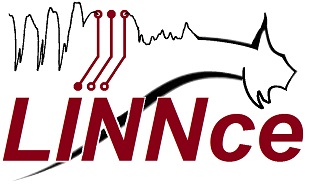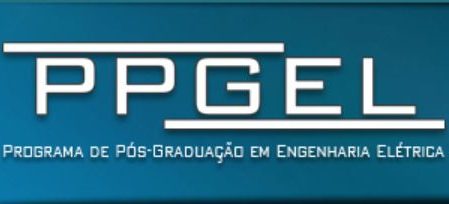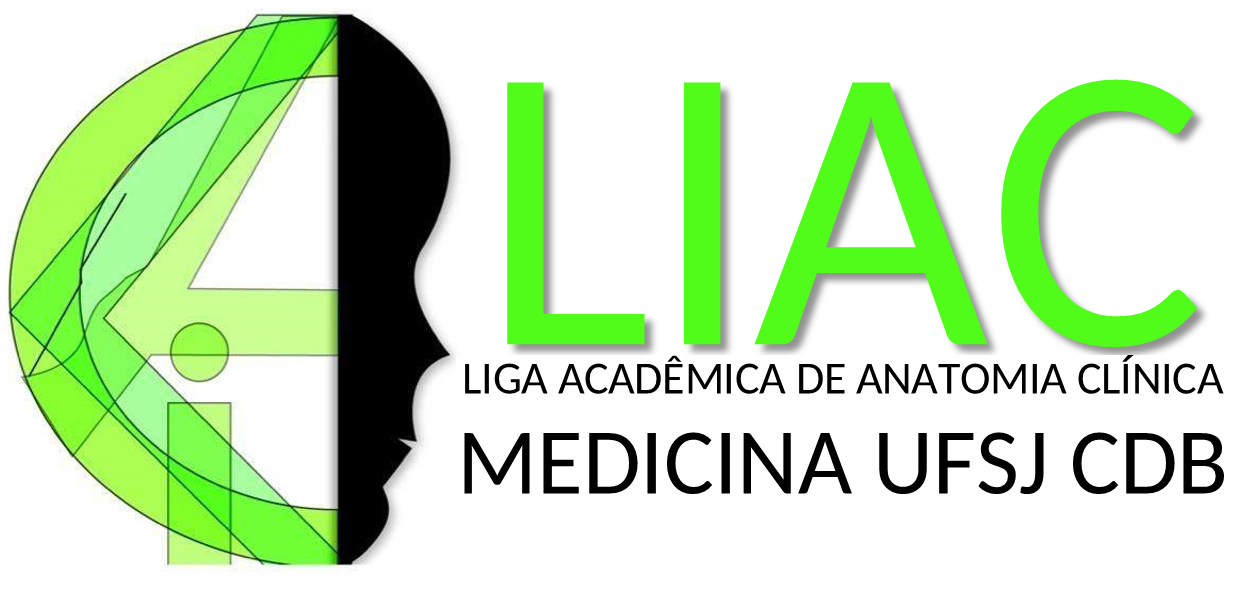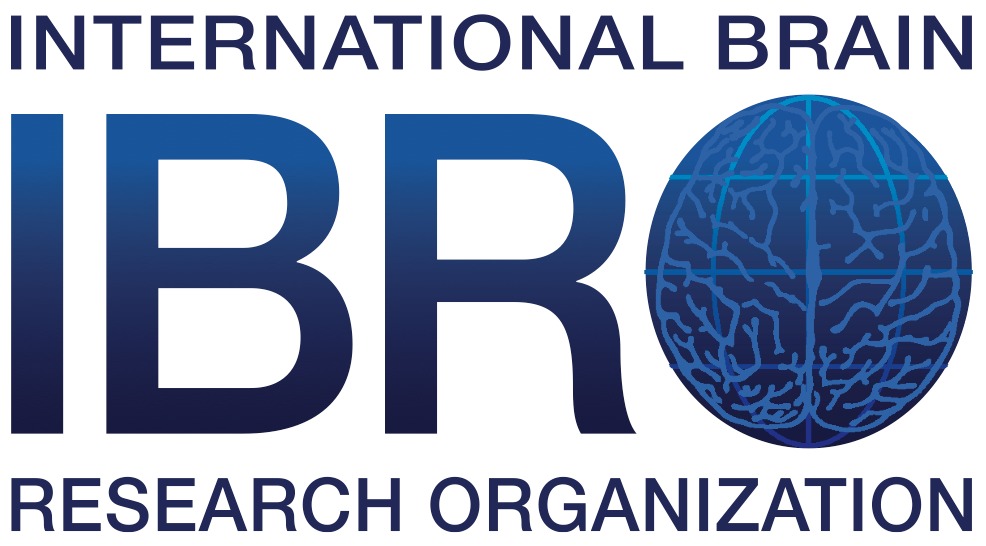
Latin American Workshop on Computational Neuroscience
São João del-Rei, MG - Brazil - September, 18-20, 2019
KEYNOTE SPEAKERS
Professor Diego Hernán Peluffo-Ordóñez

Yachay Tech, Ecuador
Biography: Prof. Diego Peluffo was born in Pasto - Colombia in 1986. He received his degree in electronic engineering, the M.Eng. and PhD degree in industrial automation from the Universidad Nacional de Colombia, Manizales - Colombia, in 2008, 2010 and 2013, respectively. He undertook his doctoral internship at KU Leuven - Belgium.Afterwards, he worked as a post-doc at Université Catholique de Louvain at Louvain la-Neuve, Belgium. In 2014, he worked as an assistant teacher at Universidad Cooperativa de Colombia - Pasto. From 2015 to 2017, he worked as a researcher/professor at Universidad Técnica del Norte - Ecuador. Currently, he is working as a professor at the School of Mathematical Sciences and Information Technology, and researcher at the Computational Intelligence Research Line from Yachay Tech - Ecuador. He is supervisor and external member of ALEPHSYS (Algorithms embedded in Physical Systems) research group from Universitat Rovira i Virgila - Spain. He is the head of the SDAS Research Group (www.sdas-group.com). His main research interests are kernel-based and spectral methods for multiple-annotatorsdriven classification, data clustering and dimensionality reduction. His applications of interest encompass analysis of complex high-dimensional data, signals, imaging and videos analysis for medical and industry scenarios.
Summary: The analysis of dynamic or time-varying data has emerged as an issue of great interest taking a more and more important place in scientific community, especially in automation, pattern recognition and machine learning. There exists a broad range of remarkable applications such as video analysis, motion identification, segmentation of human motion and plane tracking, among others. Spectral matrix analysis is one of the approaches to address this issue. Indeed, spectral techniques, mainly those based on kernels, have proved to be a suitable tool in several aspects of interest in pattern recognition and machine learning even when data are time-varying, such as the estimation of the number of clusters, clustering and classification. Most of spectral clustering approaches have been designed for analyzing static data, discarding the temporal information, i.e. with no considering the evolutionary behaviour along time. Some works have been developed to deal with the time varying effect by incorporating dynamic information through kernel functions. Nonetheless, an approach able to accurately track and cluster time-varying data in real time applications remains an open issue. Then, there exists a challeging research area aimed at designing kernel-based dynamic spectral clustering. In this talk, we overview some foundations and key aspects for the design of clustering approaches able to deal with dynamic data. A special interest will be given to a primal-dual and kernel-based formulations. Some interesting applications are also outlined.
Professor Gabriela Castellano

Universidade de Campinas, Brazil
Biography: Graduated in Physics (1991) and Master in Physics (1994) from University of São Paulo at São Carlos, PhD in Electrical Engineering (1999) from King's College, University of London. Worked from 2000 to 2002 at Eldorado Research Institute as software engineer. Worked from 2002 to 2004 as a postdoc researcher in image processing of brain MR images at University of Campinas (UNICAMP). Since 2004 she has been at the Gleb Wataghin Physics Institute of UNICAMP, where she is now an associate professor. At UNICAMP she has been teaching undergrad courses for Medical and Biomedical Physics students. Since 2005 she has been a member of UNICAMP's Neurophysics group, doing research in the following lines (all related to normal and pathological studies of the brain): 'static' and functional MR spectroscopy, texture analysis of anatomic MRI, brain connectivity studies based on fMRI and EEG, brain-computer interfaces, development of assistive and rehabilitation techniques for motor and cognitive function. She was a researcher at CInAPCe Program (Interinstitutional Cooperation for Support of Brain Research) supported by FAPESP (2007-2013), and at TINe Project (Development of Information Technologies for Neurology) supported by FINEP (2010-2014). Since 2013 she is a co-PI at BRAINN (Brazilian Institute of Neuroscience and Neurotechnology) supported by FAPESP, and since 2016 she is PI (coordinator) of XTReMe Project (eXperiences of Technologies for Rehabilitation in Medicine) supported by FINEP.
Summary: Every time we learn something we change the underlying structure and function of the brain. This is true for trainings targeting a specific brain function (through brain signal modulation, such as in neurofeedback) and for trainings targeting recovery of motor and cognitive function (such as in stroke impaired patients). Our group main research line has been to search for brain changes associated to these types of trainings, both to improve understanding of the underlying brain processes associated to these types of learning and to evaluate possible markers to predict training results. We are doing this using both fMRI and EEG data. Here, I will present an overview of the techniques (EEG and MRI) we use to measure brain changes, I will talk about brain-computer interfaces, neurofeedback training and rehabilitation using virtual reality, and I will show some of the results we have already obtained with these works.
Professor Ives Cavalcante Passos

Universidade Federal do Rio Grande do Sul, Brazil
Biography: Dr Passos is a professor of psychiatry and researcher trained in neuroscience and clinical psychiatry with focus on mood disorders, and methods to analyze big data, such as machine learning. His current research and teaching interests lie in 1) understand the biological underpinnings of mood disorders; 2) integrate multiple clinical and biological features to predict mood disorder outcomes, such as suicide and conversion to mood disorder; 3) study clinical outcomes related to psychiatric illness progression, such as treatment refractoriness and cognitive/functioning impairment. His enthusiastic commitment to the advancement of knowledge resulted in 50 articles published in the top peer-reviewed journals in neuroscience and psychiatry. His work pioneered the field of using big data analytics and machine learning in neuroscience and psychiatry (1,2). By using such techniques, he built clinically useful predictive signatures able to accurately identify which patients are likely to commit suicide (3), to improve diagnosis in psychiatry (4), to identify cognitive impairment and changes in brain structures. In addition, He was selected in 2016 one of the twenty Young Physician Leaders in the world by The Interacademy Medical Panel and M8 Alliance of Academic Health Centers (http://www.iamp-online.org/ypl/passos-ives-cavalcante ) and represented his country at the World Health Summit (Berlin, 2016). He also wrote some editorials about the impact of big data analytics in the future of precision medicine and psychiatry (1,5), postulating that groundbreaking discoveries and changes at the population level would involve data integration focused on a person-centered approach (1,5). He has done his postdoctoral training in machine learning techniques to analyze massive amounts of data from multiple biological levels, such as neuroimaging, neurocognition, and genetics. In this sense, he has recently wrote a book edited by Springer Nature entitled “Personalized Psychiatry - Big Data Analytics in Mental Health”. In this book, the aims are 1) to empower researchers with a different way to conceptualize studies in psychiatry by using big data analytics approach; 2) to give clinicians a broad perspective about how clinical decisions such as selection of treatment options, preventive strategies, and prognosis orientations can be changed by big data approach; 3) to provide a unique opportunity to showcase innovative solutions tackling complex problems in mental health using big data and machine learning; 4) to discuss challenges in terms of what data could be used without jeopardizing individual privacy and freedom. 1. Passos IC, Mwangi B, Kapczinski F. Big data analytics and machine learning: 2015 and beyond. The Lancet Psychiatry. 2016 Jan;3(1):13–5. 2. Librenza-Garcia D, Kotzian BJ, Yang J, Mwangi B, Cao B, Pereira Lima LN, Kapczinski F, Passos IC. The impact of machine learning techniques in the study of bipolar disorder: a systematic review. Neuroscience & Biobehavioral Reviews. 2017 Jul 17; 3. Passos IC, Mwangi B, Cao B, Hamilton JE, Wu M-J, Zhang XY, et al. Identifying a clinical signature of suicidality among patients with mood disorders: a pilot study using a machine learning approach. J Affect Disord. 2016 Jan;193:109–16. 4. Wu M-J, Mwangi B, Bauer IE, Passos IC, Sanches M, Zunta-Soares GB, et al. Identification and individualized prediction of clinical phenotypes in bipolar disorders using neurocognitive data, neuroimaging scans and machine learning. Neuroimage. 2017 Jan 15;145(Pt B):254–64. 5. Duffy A, Goodday S, Passos IC, Kapczinski F. Changing the bipolar illness trajectory. The Lancet Psychiatry. 2017 Jan;4(1):11–3.
Summary: Machine learning techniques are gaining traction in health sciences and might provide predictive models for both clinical practice and public health systems. Compared with traditional statistical methods that provide primarily average group-level results, machine learning algorithms allow predictions and stratification of clinical outcomes at the level of an individual subject. Additionally, machine learning can handle large amounts of data from multiple biological levels and also yield better relationship estimations between these multivariate data. By theoretically being able to model any function, machines can find complex nonlinear patterns relating predictors to their expected outcome. Therefore, machine learning techniques will provide diagnostic and prognosis predictions in different fields of health sciences as well as risk calculators to predict treatment response .
Professor Jim Torresen

University of Oslo, Norway
Biography: Jim Torresen is a professor at University of Oslo where he leads the Robotics and Intelligent Systems research group. He received his M.Sc. and Dr.ing. (Ph.D) degrees in computer architecture and design from the Norwegian University of Science and Technology, University of Trondheim in 1991 and 1996, respectively. He has been employed as a senior hardware designer at NERA Telecommunications (1996-1998) and at Navia Aviation (1998-1999). Since 1999, he has been a professor at the Department of Informatics at the University of Oslo (associate professor 1999-2005). Jim Torresen has been a visiting researcher at Kyoto University, Japan for one year (1993-1994), four months at Electrotechnical laboratory, Tsukuba, Japan (1997 and 2000) and a visiting professor at Cornell University, USA for one year (2010-2011). His research interests at the moment include artificial intelligence, machine learning, reconfigurable hardware, robotics and applying this to complex real-world applications. Several novel methods have been proposed. He has published approximately 150 scientific papers in international journals, books and conference proceedings. 10 tutorials and several invited talks have been given at international conferences. He is in the program committee of more than ten different international conferences, associate editor of three international scientific journals as well as a regular reviewer of a number of other international journals. He has also acted as an evaluator for proposals in EU FP7 and Horizon2020 and is currently project manager/principle investigator in six externally funded research projects/centres. More information and a list of publications can be found here: http://www.ifi.uio.no/~jimtoerd
Summary: Our mental state to a large extent impacts our well-being. Unfortunately, for many people, it fluctuates during lifetime and results in various degree of mental disorders. The most common one is depression but there exist a number of other ones as well like social anxiety, Attention Deficit Hyperactivity Disorder (AHDH), and bipolar disorders. The treatment is on the other hand often long-lasting and much dependent on therapeutic follow-up. Little technology is available to measure mental state and provide any automatic support and treatment. This is what we at the University of Oslo together with clinical collaborators in Bergen in Norway are addressing in the project INtroducing personalized TReatment Of Mental health problems using Adaptive Technology (INTROMAT). We work in the project with sensor-data collected from mental health patients and controls using mobile phones and sensor watches. We apply state-of-the-art machine learning methods to train models that can classify and foresee how the mental state is changing through time. Data comes in many formats like motion, speech, mobile phone usage, and more. Having some indication of the future development of the brain´s mental state is helpful for providing a user with self-help as well as support to the therapist. In parallel, we are implementing technology to increase health safety for older people living by themselves at home. This is by using ambient sensor technology on a mobile robot platform to remotely sense the state of a person to be able to warn the caregiver when any abnormal or emergence situation has occurred. This has relevance to mental health since the mental state can impact the well-being and risk of emergency situations. In this keynote, three important aspects of these projects will be presented including the user design perspective, sensing technology and possible treatments that together target to contribute improved mental health. The talk will also address many of the ethical issues like privacy, security and safety that should be considered when developing such technology.
Professor Márcio Moraes

Núcleo de Neurociências - Universidade Federal de Minas Gerais, Brazil
Biography: Graduated in Electronic Engineering from the Technological Institute of Aeronautics (1992) and Doctorate of Science in Human Physiology from the University of São Paulo (1998). Joined the Space Life Sciences Training Program - National Aeronautics and Space Administration (NASA-SLSTP); Visiting Scholar at the University of Illinois College of Medicine at Peoria and Senior Research Fellow at King's College London and Research Fellow at Harvard Medical School / Massachusetts General Hospital - Boston. Member of the Neurobiology Commission of the International League Against Epilepsy (NBC-ILAE). Currently holds a position as a Full Professor at the Federal University of Minas Gerais: Group leader of Núcleo de Neurociências (NNC-http://www.nnc.ufmg.br) and Director of the Center of Technology and Research in Magnetic Resonance (CTPMAG-http://www.nnc.ufmg.br/CTPMAG). My research interests focus on the neural circuitry dynamics involved in both physiological behavioral tasks and also in epilepsy. Major areas of research in my laboratory include new therapeutic and seizure-prediction strategies for Epilepsy and how seizure-associated circuits interfere with normal behaviors including sensory processing, memory, and emotions; thus, addressing important aspects of epileptic comorbidities. In addition, how past-experiences (i.e. memory) affects physiological sensory-motor integration and sensory processing is also an important aspect of our work. Electrophysiology and non-invasive imaging would be our main areas of expertise which are complemented by colleagues from NNC.
Summary: For more than a century now, since phenobarbital was proposed as a therapeutic alternative for the treatment of epileptic seizures, many other drugs have been added to the pharmacological arsenal against Epilepsy but not significantly improving treatment of its various forms/subtypes - although reducing side effects. A paradigm shift is urgently needed in the way we think about Epilepsy in order to significantly impact diagnosis, treatment, prediction and prognosis. Many researchers have considered the hypothesis that epileptogenic and/or ictogenic mechanisms may derive from gradual, but permanent, corruptions of normal neural network behavior. In fact, such a System’s View regarding the Epileptic Condition could explain the myriad of psychiatric and neurological comorbidities that accompany the disease, as a grayscale that expands from normality. Thus, as an example, the phenomena of corticalization of memory traces during memory consolidation could bare mechanistic similarities with the abnormal coupling and hyper-excitability that arise from the epileptogenic process. This lecture will attempt to untwine the concepts of neural network excitability and hyper-synchronicity in epilepsy in order to make a better parallel with physiological processes; which has been a research focus from our Laboratory for the last two decades. Data from our laboratory will be used to suggest new therapeutical approaches using temporally structured deep brain stimulation (DBS) protocols to interfere with the hyper-coupling of the epileptogenic/ictogenic networks; thus blocking the onset and spread of ictal activity. Also, by using DBS to actively probe specific circuits, aimed to highlight dysfunctional behavior in the early stages of ictogenesis, we have also made some advances in the field of seizure prediction.
Professor Michela Chiappalone

Central Research Lab Genova, Instituto Italiano de Tecnologia, Italy
Biography: The research interests of Michela Chiappalone are in the field of Neuroengineering, with a special focus on neuroprosthetics and neurorehabilitation. She graduated in Electronic Engineering (summa cum laude) in 1999 and obtained a PhD in Electronic Engineering and Computer Science from University of Genova (Italy) in 2003, under the supervision of Prof. M. Grattarola and Prof. S. Martinoia. In 2002 she has been visiting scholar at the Dept of Physiology, Northwestern University (Chicago, IL, USA) supervised by Prof F. A. Mussa-Ivaldi. At Northwestern she had the opportunity to work on the first ever developed bi-directional neurorobotic closed loop system involving the brain of a lamprey and a small mobile robot. After a Post Doc at the University of Genova, in 2007 she joined the Neuroscience and Brain Technologies Dept at the Istituto Italiano di Tecnologia (IIT) as a Post Doc, under the supervision of Prof. S. Martinoia. In 2013 she got a team leader position (‘Researcher’) in the same Institution. In 2015 she has been visiting Professor at KUMED (Kansas City, KS, USA), hosted by Prof. R.J. Nudo, one of most prominent experts of post-stroke plasticity. From 2012 to 2015 M. Chiappalone has been Coordinator of the FET Open European Project BrainBow, judged excellent by the European Commission. In 2017, she joined the Rehab Technologies IIT-INAIL Joint Lab of IIT to lead a group aimed at interfacing robotic devices with the nervous system for applications in neuroprosthetics, neuromodulation and neurorehabilitation. In 2018 she got the national scientific habilitation as Full Professor of Bioengineering. She authored 60 papers published in International Journals, more than 50 peer-reviewed contributions to International Conferences, 8 Book Chapters and she gave more than 60 scientific talks at International/National Conferences and Research Institutions. She is also Editor of 2 Books.
Summary: Neuroprostheses are devices that have an interface with the nervous system and supplement or substitute functionality in the patient's body. In the collective imagination, neuroprotheses are primarily used to restore sensory (e.g. acoustic or visual neuroprostheses) or motor capabilities (e.g. artificial limbs), but in the recent years new devices to be applied directly at the brain level are taking place. The idea is to use them to treat the neuronal injury in the brain, where the damage is actually located, and to promote brain plasticity in order to speed up the recovery process. The methodology behind this technological development requires to know how the neural dynamics is affected by the lesion and whether and how electrical stimulation can reshape or restore the original behavior, both on a short and a long term perspective. To respond to these and related questions, more than 10 years ago researchers have begun to explore the possibility to create ‘neurohybrid’ systems (in vitro and in vivo) at the interface between neuroscience and robotics, thus providing an excellent test bed for modulation of neuronal tissue and forming the basis of future bi-directional Brain Machine Interfaces and Prostheses. The first-ever in vitro closed-loop system consisted of a lamprey brainstem bi-directionally connected to a small wheeled robot. Inspired by that and other pioneering studies, a bi-directional system involving neocortical networks grown on Micro Electrode Arrays (MEAs) and a small robot was developed and tested in my lab. More recently, a closed-loop paradigm was also exploited to develop the proof of concept for an in vitro ‘brain-prosthesis’, aimed at restoring damaged neuronal connections. Within this framework, I will show the results from two projects. I will start by presenting the development and the results related to the European project BrainBow, whose final goal was to restore the communications between damaged neuronal networks. Then, I will present recent results related to closed-loop paradigms for brain repair in vivo, focusing on how different types of stimulation can affect the neural activity. Further developments and applications in the fields of neurorehabilitation and neurorobotics will be briefly introduced and discussed.
Professor Sidarta Tollendal Gomes Ribeiro

Instituto do Cérebro - Universidade Federal do Rio Grande do Norte, Brazil
Biography: Sidarta Ribeiro is Full Professor of Neuroscience and Vice-Director of the Brain Institute at the Universidade Federal do Rio Grande do Norte. He holds a Bachelor's degree in Biology from the Universidade de Brasília (1993), a Master's degree in Biophysics from the Universidade Federal do Rio de Janeiro (1994) and a Ph.D. in Animal Behavior from the Rockefeller University (2000), with post-doctoral studies in Neurophysiology at Duke University (2005). Has experience in neuroethology, molecular neurobiology, and systems neurophysiology, with an interest on the following subjects: memory, sleep, and dreams; neuronal plasticity; vocal communication; symbolic competence in non-human animals; drug policy and neuroeducation. From 2009-2011, served as Secretary of the Brazilian Society for Neuroscience and Behavior. From 2011-2015 he served as Chair of the Brazilian Regional Committee of the Pew Latin American Fellows Program in the Biomedical Sciences, and since 2011 he is a member of the Steering Committee of the Latin American School for Education, Cognitive and Neural Sciences (LA School). Senior research associate of the FAPESP Research Centre for Innovation and Diffusion in Neuromathematics. Member of the Advisory Board of the Brazilian Platform for Drug Policy. Sidarta Ribeiro is greatly interested in the study of the neural bases of consciousness and its alteration, including investigation of the ayahuasca experience. He is also involved in the public debate on the medicinal uses and the legalization of cannabis in Brazil.
Summary: Sleep has been implicated with learning and memory in humans and several animal models. The mnemonic role of sleep has been hypothesized to stem from a non-Hebbian rescaling of synaptic weights (synaptic homeostasis hypothesis). Alternatively, sleep has been proposed to trigger a combination of non-Hebbian rescaling and Hebbian upscaling of synaptic weights in complementary circuits (synaptic embossing). This talk will review experimental and computational evidence regarding the synaptic embossing theory, including changes in neuronal activity, kinase phosphorylation, and immediate-early gene expression. The role of sleep-dependent plasticity in memory corticalization and restructuring will be discussed.
Professor Julian Tejada

Universidade Federal de Sergipe, Brazil
Biography: Graduate in Psychology (2002) from National University of Colombia and PhD in Psychobiology from University of São Paulo (2010). Nowadays He is Professor of Federal University of Sergipe, Postdoctoral research of Fundación Universitaria Konrad Lorenz in Bogotá and collaborator member of Pós-Graduação em Ciências Fisiológicas of the Federal University of Sergipe. He has worked with computational neuroscience and conductance based models for the study of neurological diseases, such as epilepsy and Alzheimer.
Summary: Replication is the keystone of the empirical science, but, most of the scientific papers are not reproducible, al least in experimental, not computational, neuroscience. But how much the computational neuroscience papers are reproducible? At first glance, it may seem that it would be 100% reproducible, but replicability is more than put available the model in a repository, it implies a set of decisions which affect all of the experiment: which models, parameters and protocols should I use, how I track every results, how I document each adjust, how I do version control of each script. In the present lecture, I will show my experience working with conductance based models and the necessity of adopt a framework which permits a better interoperability between the different models, as a start point to developed a more reproducible computational neuroscience.
*Other keynote speaker names will be announced soon.










